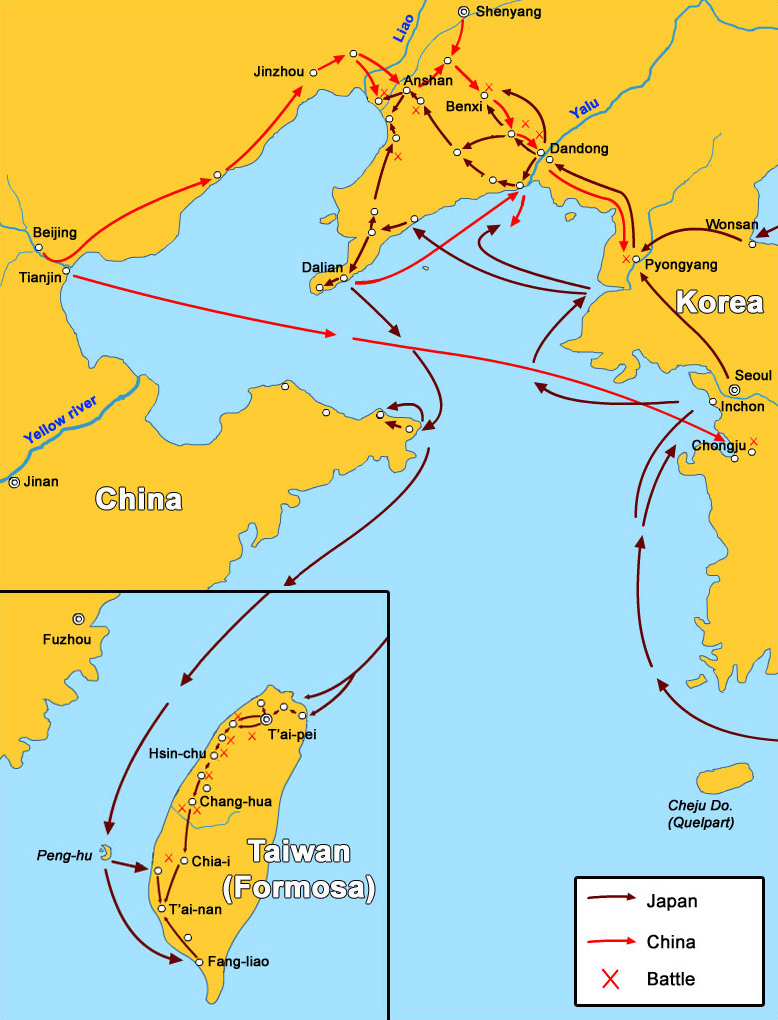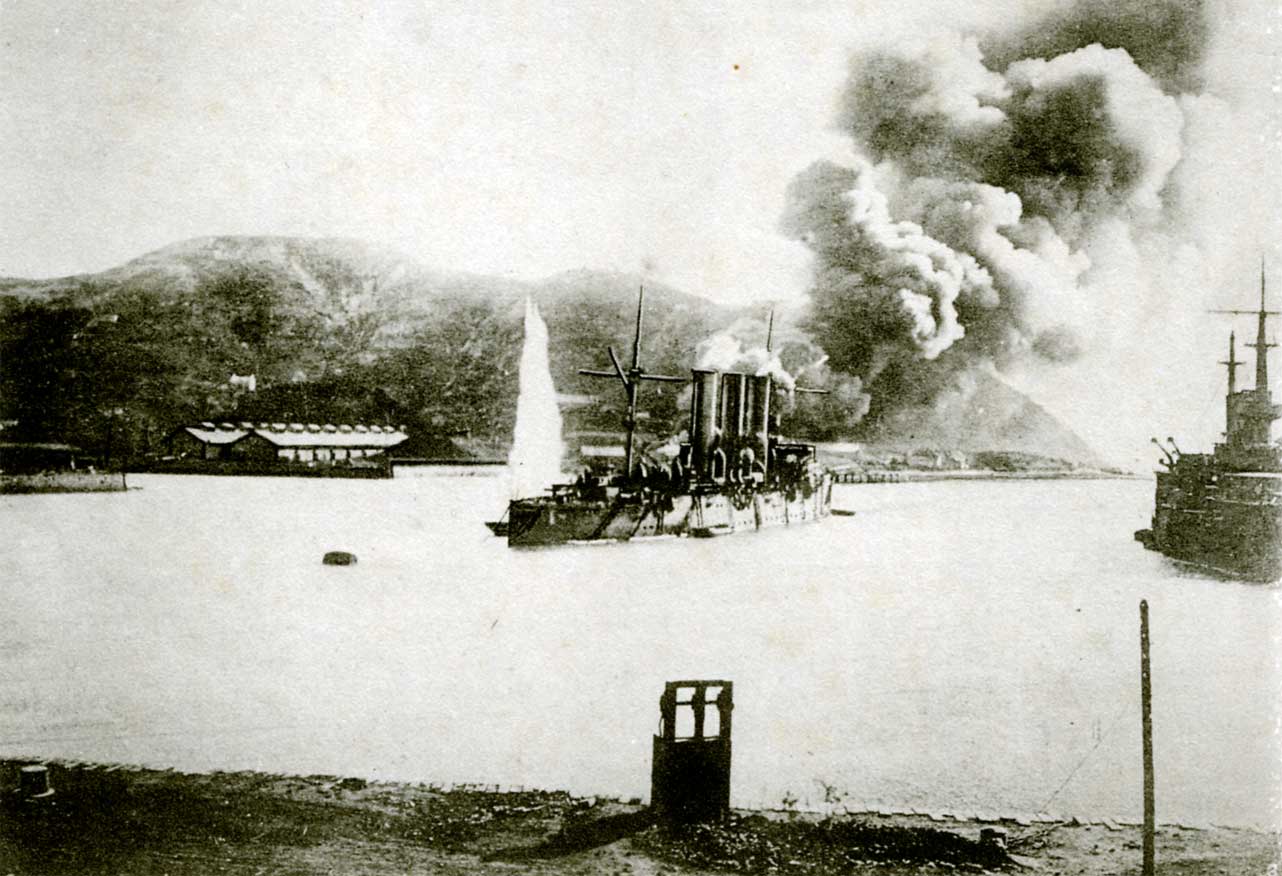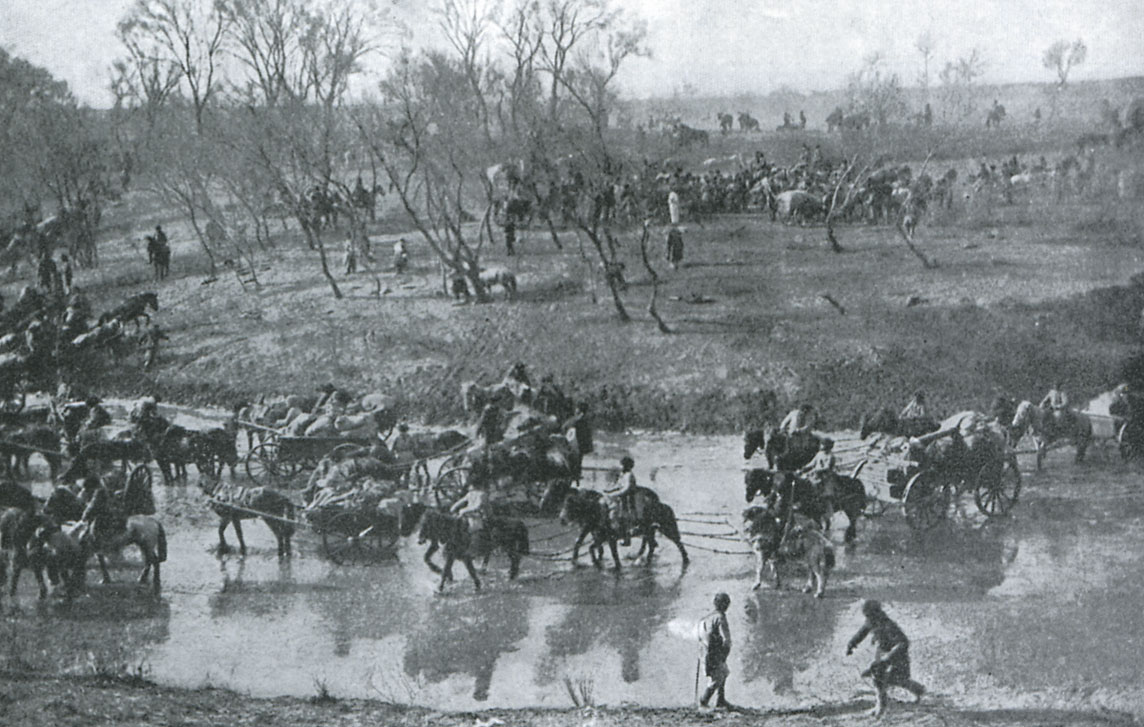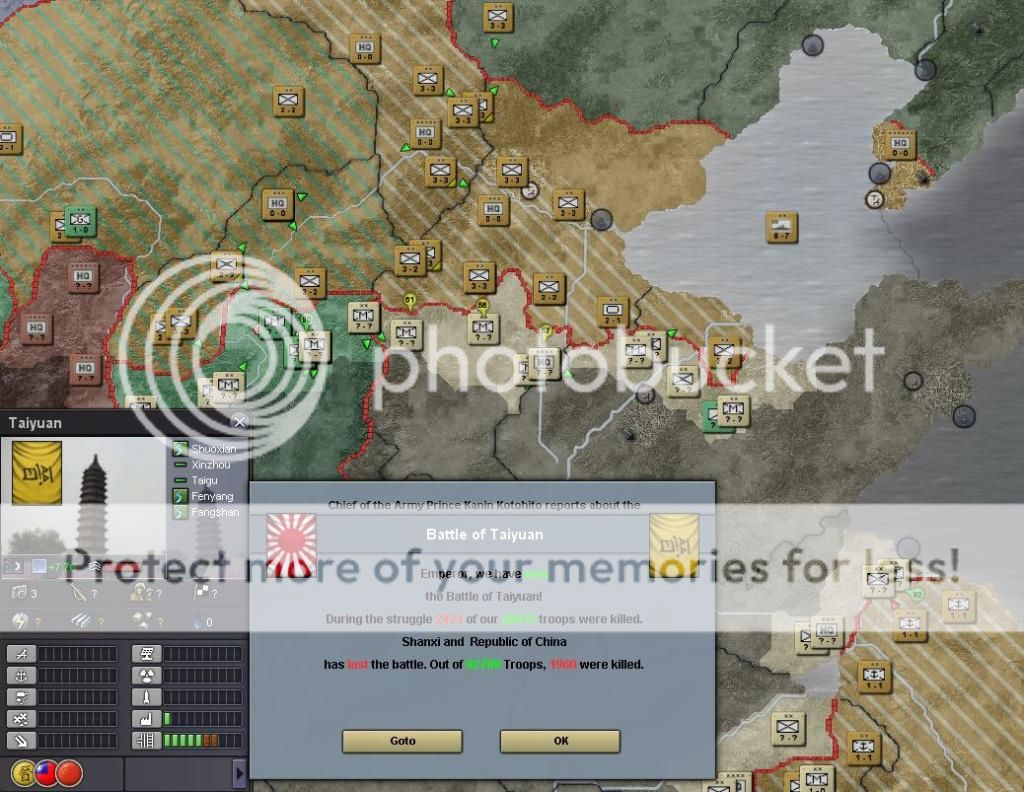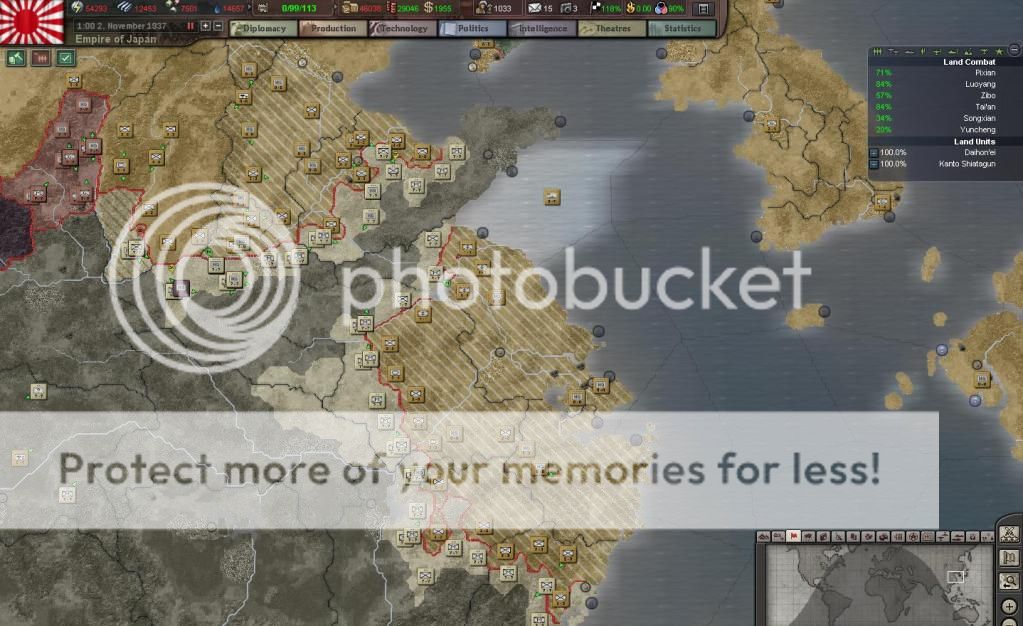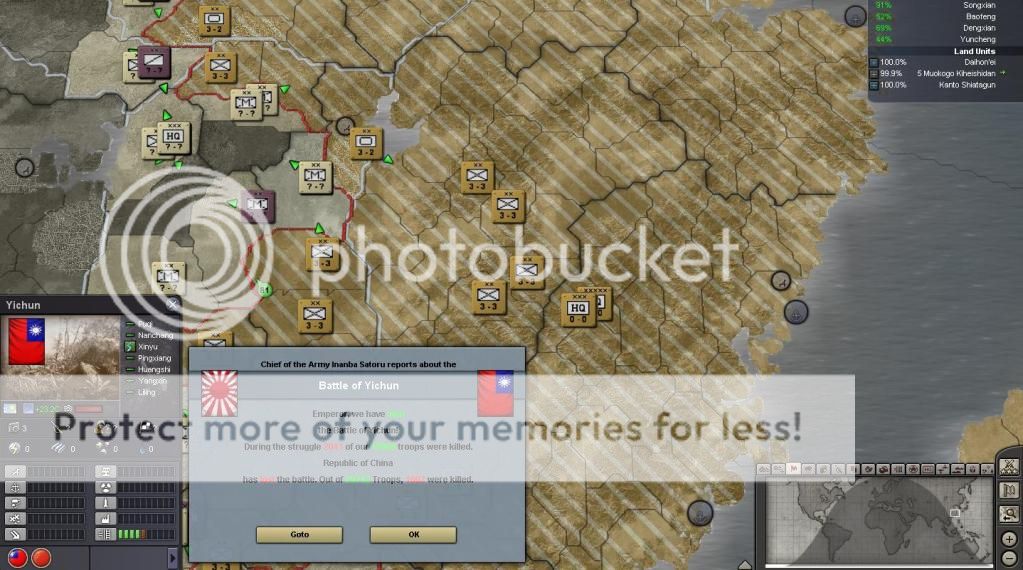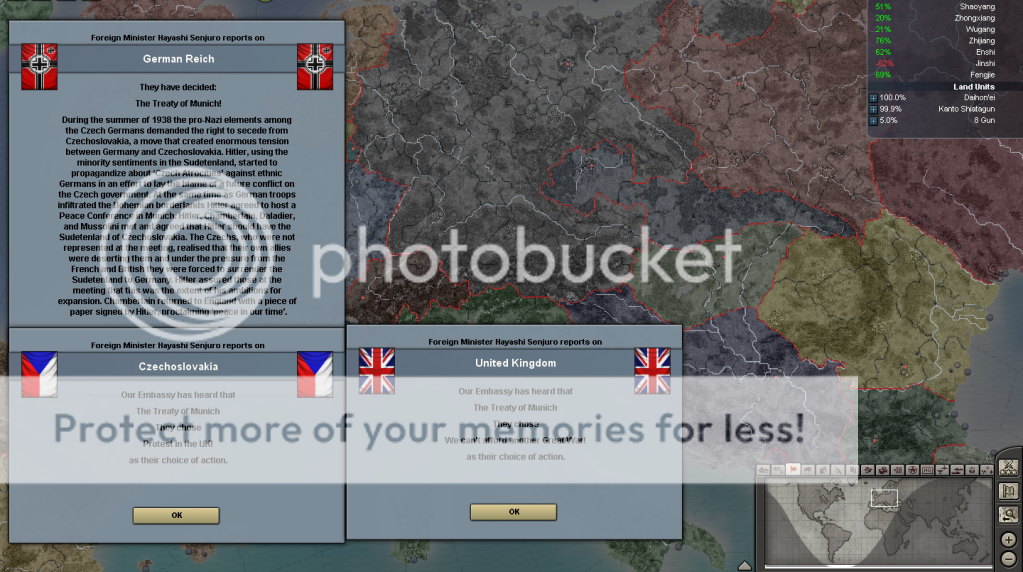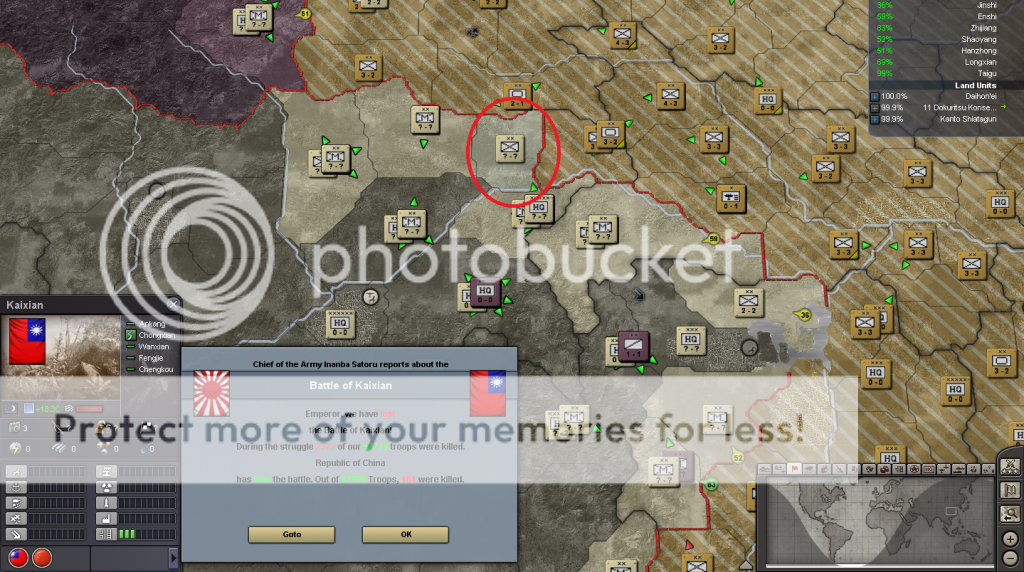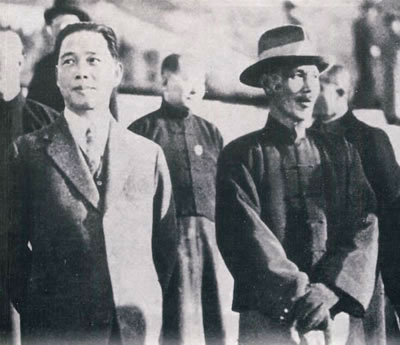Chapter 3: The State of the Empire of Japan - January 1, 1936
As 1936 began, the Empire of Japan was one of the world's major powers. Due to the global recession and the necessary budget cuts to remain fiscally solvent, Japan's military was not at the level befitting a major power, but closer to a large regional power, like Poland or Argentina. However, in the event of war, either with the Soviets or Chinese, Japan could quickly expand the IJA beyond the current peacetime level.
The Keisuke Cabinet
Author's note: Leadership in the HPP mod is determined mainly by how powerful a nation is. Other, smaller factors are the education tech, ministers, and random events.
Power is measured in terms of effective IC and the size of the military.
Japan's army and navy were both large and modern, though the army lagged behind the navy in terms of equipment quality. Japan's air force was split between the army and navy, with each side jealously guarding their aircraft. Japan's navy operated under a single, unified command, while the army was split into several competing factions. In Japan itself, the army consisted of the Imperial Guard division (Konoe Shidan) and garrison forces. On the mainland, the Korean Army (Chosen-gun) was under the command of the Imperial General Headquarters (Daihon'ei) and responsible for the defense of Japanese assets in Korea as well as guarding the Soviet border. Separate from the forces stationed in Korea was the Kwantung Army (Kantogun), responsible for the defense of Manchuria from the Republic of China and the USSR. The Kantogun was largely independent from the Daihon'ei, and caused the Mukden Incident without orders from Tokyo. Kantogun units would frequently provoke Soviet and Chinese soldiers into attacking Japanese positions. Such uncontrolled behavior would later spark the 2nd Sino-Japanese War as well as large-scale border skirmishes with the Soviet Union.
The IJN had its own garrison forces as well, which were stationed in Japan's Pacific Island bases. The IJN also had the Special Naval Landing Force (Kaigun Tokubetsu Rikusentai, aka SNLF), which served as the navy's ground troops. In 1936 the majority of the IJN was stationed in Japan.
A breakdown of Japan's military
Distribution of Japan's military by theater
Author's note: The mod has several new units and has removed some familiar units. The counter that is an oval with a x through it is an infantry support tank.
The two counters that have a triangle in the middle are the HPP's support brigade "container" units. The version with small circles at the bottom is motorized, while the version with a small oval at the bottom is mechanized. Japan had the world's 3rd largest armored force, which consisted mainly of armored cars.
The Imperial Japanese Army's operational doctrines, while effective during WW1, were outdated in 1936. The main tactic the army used was the Mass Assault, supported by artillery fire. This was the tactic used at the start of WW1 by all combatants. Since Japan did not participate in the trench warfare of the Western Front, Japan did not learn the same lessons from the war that the Europeans had learned, and Japan's operational tactics did not change after the war ended. Likewise, Japan's tanks were divided into two segments: Cavalry and Infantry Support (IST). Cavalry tanks were light-weight and fast, designed to be used alongside the dragoon-like cavalry units stationed in Inner Mongolia. The ISTs were either slow, heavily armored tanks designed to provide cover from enemy fire while the infantry advanced upon fortified locations or small armored cars designed for scouting duties. However, there is one aspect where the IJA was truly unique, and that was the focus on infantry trained to fight in rough terrain and away from major transportation hubs. Japanese troops were far more skilled at taking advantage of the environment than their western counterparts.
A look at the doctrines used by the world's armies
In 1935, Japan began to reconstruct its oldest battleships in response to the naval arms race sparked by the Anglo-German Naval Agreement. The treaty allowed Germany to bypass the restrictions imposed by the Treaty of Versailles and construct a navy whose tonnage was up to 35% of the Royal Navy's tonnage. This prompted France to replace all 6 of its battleships with 2 new battlecruisers and 8 new battleships, which in turn prompted Italy to retire two old ships and replace them with 4 new battleships. In response the IJN accelerated plans to rebuild the Kongo-class Battlecruisers to act as carrier escorts as well as refit the IJN Kaga and IJN Akagi on top of building the new carrier IJN Soryu. The new naval arms race was extremely taxing to the national budgets of France, Italy, and Japan. Japan's military industrial capacity was limited when compared to France or the UK, and it was heavily skewed to satisfy the demands of the IJN. Despite being a modern industrialized nation, roughly 90% of Japan's railways were designed to exclusively serve the needs of the IJN, leaving the stretch of Honshu between Tokyo and Hiroshima as the area where Japan's railway network was the densest. In contrast, Japan's highway system consisted of unpaved dirt and gravel roads.
A comparison of the modernized IJN Haruna and the IJN Hiei, which has yet to undergo reconstruction
An overview of Japan's military industrial capacity and military budget
A summary of Japan's technological standing. Years are relative to what the other major nations have, so a technology dated for 1936 means most of the 7 major nations acquired it in 1936.
Infantry weapons
Tank equipment
Author's note: Yes, I can build heavy tanks. I don't know why though since I didn't mod this area...
Small warship equipment
Author's note: I think TZoli is giving Japan's cruisers a bit too much credit
Large warship equipment
Large aircraft equipment
Author's note: Techs seem a bit high, but all the majors have air techs like this so it evens out
Small aircraft equipment
Author's note: Techs seem a bit high, but all the majors have air techs like this so it evens out
Industrial advances
Advances in science and logistics
Army doctrines
Army Operational doctrines
Naval doctrines1
Air doctrines
-----------------------------------------------------
[1] Notice that Japan starts with Night Fighting Training. This is a 1942 tech, but the IJA was extremely effective during night engagements until the Allies adapted their tactics near the end of the war, and Japan gets this tech at the start of the scenario to reflect that.




 Reply With Quote
Reply With Quote